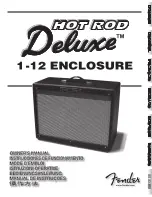
5-5
Improper exercising may cause more
damage than no exercising at all. Significant
amounts of water and raw fuel will remain in the lubri-
cation oil if the unit is run at a low operating tempera-
ture. Also, operating the engine at no load or at low
temperatures causes carbon buildup and exhaust
system fouling. Continued operation in this manner
may cause starting failure and/or engine damage.
Exercising a generator set without exercising its as-
sociated controls and switchgear does not test the
operation of the controls and switchgear. If the con-
trol systems are not fully functional, the system may
fail to provide power when required.
After each exercise period, refill the fuel tank and check
the engine for leaks and overall condition. Locate the
cause of any leaks and correct.
ENGINE RATINGS
Ratings apply to altitudes up to 1000 feet (305 m), gen-
sets using standard cooling, normal ambient tempera-
tures and with No. 2 Diesel fuel. Consult the nearest
authorized Onan service center for operating character-
istics under other conditions.
HIGH/LOW OPERATING TEMPERATURES
The generator set has been designed to operate satis-
factorily in both high (above 100
°
F) and low (below 0
°
F)
temperatures. Use the oil recommended in the PRE-
START section for the expected temperature conditions.
High Operating Temperatures
1. See that nothing obstructs air flow to and from the
set.
2. Keep cooling fins clean. Cylinder air housings
should be properly installed and undamaged.
Low Operating Temperatures
1. Use correct viscosity oil for temperature conditions.
Change oil only when engine is warm. If an unex-
pected temperature drop causes an emergency,
move the set to a warm location or apply heated air
(never use open flame) externally until oil flows
freely.
2. Use fresh fuel. Protect against moisture condensa-
tion.
3. Keep fuel system clean, and batteries in a well
charged condition.
4. Partially restrict cool air flow but use care to avoid
overheating.
5. Use additional preheating during cold starts.
DUST AND DIRT
1. Keep the generator set and the cooling system
clean.
2. Service the air cleaner as frequently as necessary.
3. Change the crankcase oil every 100 operating
hours.
4. Keep oil and fuel in dust-tight containers.
5. Keep governor linkage clean.
HIGH ALTITUDE
Maximum power is reduced approximately 4 percent for
each 1000 feet (305 m) altitude above sea level, after the
first 1000 feet (305 m).
OUT-OF-SERVICE PROTECTION
The lubricating qualities of diesel fuel should protect a
diesel engine for at least 30 days when the unit is not in
service. To protect a set that will be out of service for
more than 30 days, proceed as follows:
1. Run the set under at least 50 percent load, until it is
thoroughly warmed up.
2. Shut down the engine.
3. Disconnect the starting batteries and follow stan-
dard battery storage procedures.
Freezing temperatures may se-
verely damage the starting batteries. When the
batteries are in storage, be certain to maintain
their liquid level. Use a trickle charger to main-
tain the correct specific gravity.
4. Drain the oil from the crankcase while the engine is
warm. Refill it with clean oil, and attach a tag listing
the type of oil used.
5. Remove the flexible section of the exhaust line.
(The exhaust should have a rain cap to prevent the
entrance of moisture and dirt. If not, the exhaust can
be plugged.)
6. Service the air cleaner.
7. Remove the glow plugs from the cylinders. Pour 1
ounce (30 ml) of rust inhibitor (or SAE #10 oil) into
each cylinder. Crank the engine over several times.
Reinstall the glow plugs.
Do not exceed one ounce oil per
cylinder. excess oil may fill the combustion
chamber and prevent the engine from cranking,
due to hydraulic lock.














































